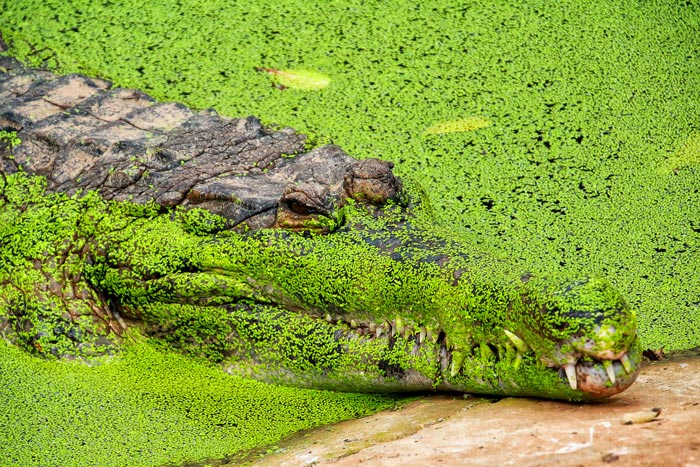Do Alligators Hibernate? What Really Happens in the Swamp When Fall Arrives

As soon as the weather cools off—even a little—the same question pops up like clockwork: “Do alligators hibernate?” It usually comes right after someone asks if gators can climb fences (they can) or if they really sleep with one eye open (not always, but close enough to keep it interesting).
Fall in South Louisiana means less sweat, fewer bugs, and a swamp that starts acting a little different. But no, alligators don’t hibernate like bears curling up in a cave with a belly full of snacks. Instead, they enter something called brumation—which sounds like a fancy word made up by a sleepy reptile but is actually a real biological process.
What Alligators Really Do When It Gets Cold
Alligators are cold-blooded. That doesn’t mean they’re ruthless (although they do look like they judge people), it means their body temperature depends on the environment. When the temperature drops, so does their energy. That’s when they go into brumation—a slowdown mode where they move less, eat less, and conserve energy.
Think of it like airplane mode for alligators. They don’t shut off entirely, but they’re not running at full speed either. They’ll still come up for air, occasionally sun themselves on a warm log, and maybe slide into the water for a little swim, but that whole fast, splashy, jaw-snapping action gets put on pause.
In most cases, they’ll find a nice burrow or dig one themselves in the bank, then hang out there when it gets chilly. Some may just chill—literally—by floating in shallow water with only their snouts poking out, like a scaly periscope.
Life Slows Down Across the Swamp
And it’s not just the gators who start dialing it down. The entire swamp eases into a slower rhythm. Birds become a little less vocal. Turtles stop sunbathing on every available log. Even the bugs start taking a break—which is possibly the biggest gift fall gives to swamp-goers.
The plant life shifts too. Cypress trees turn a rusty orange before shedding their needles, making the landscape look more like a sepia-toned postcard. Floating plants like duckweed and water hyacinth thin out, and the water takes on a more reflective quality, especially in the early morning light.
Even the frogs seem to change their tune. You won’t hear the usual nighttime chorus during the colder months. Instead, you might hear a single, ambitious croak every now and then—probably from a frog who missed the memo about it being fall.
Migration Season Gets Busy in the Sky
Fall also brings in temporary visitors—migratory birds stopping over as they head south for the winter. That means an occasional flurry of feathers in the treetops and more variety for birdwatchers with binoculars and high hopes. Ducks, warblers, and other long-distance travelers take pit stops in Louisiana’s wetlands before continuing their journeys.
The swamp might seem a little quieter, but the sky above stays busy.
Swamp Tours Take on a Different Energy
Running tours this time of year always feels a little different. There’s less buzz, both literally and figuratively. No gnats trying to crawl into your eye, no sunscreen melting down into your collar. Instead, it’s cool air, still water, and the kind of peace that only happens when nature collectively decides to calm down.
Guests expecting the high-drama, high-energy version of the swamp sometimes wonder where all the action went. But once they settle in, they start noticing the smaller things—patterns in the water, the sway of the moss, a still gator eye watching from under a log like it’s judging their outfit.
There’s a beauty in this slower version of the swamp. It’s quieter, more reflective (in mood and in water), and somehow feels more ancient. Like the landscape itself is catching its breath after the chaos of summer.
Fall Doesn’t Mean Empty
Even though things slow down, they don’t stop. Alligators might not be chasing prey, but they’re still around. They’re watching, adjusting, waiting. If a warm day rolls through—and it often does in Louisiana—you might spot one back on the bank, soaking up sun like it never left. They’re not gone, just pacing themselves.
The same goes for the rest of the swamp. It’s all still out there, just tuned to a different station.
What Fall Teaches About the Swamp
Fall in the swamp teaches patience. It teaches observation. Instead of a nonstop wildlife show, it becomes a slow-motion documentary. You might not get ten gator sightings in an hour, but the ones you do get feel more like little discoveries. A snout breaking the surface. An egret gliding through the bald cypress. A ripple in an otherwise still stretch of water.
It’s also a reminder that the swamp is always changing—never quite the same, even from one day to the next. And that’s what keeps it interesting, whether it’s July or November.
So no, alligators don’t hibernate. But they do settle into a routine that matches the rhythm of the swamp. Less drama, more stillness. Less movement, more mystery.
And for those who appreciate the quieter side of the wild, fall in the swamp delivers exactly that—no bug spray required.
